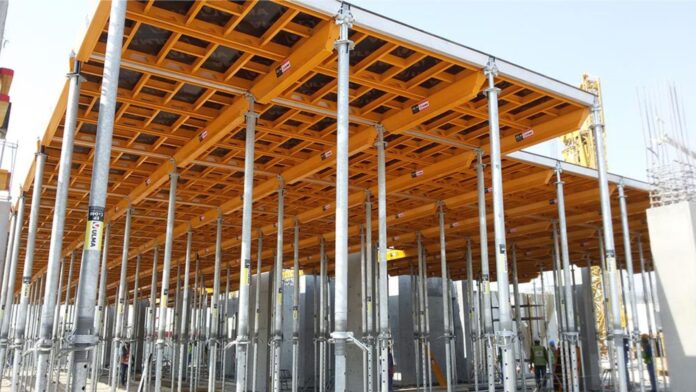Shoring supports a building, vessel, or construction structure with probes to prevent collapses. The practice is common in constructing large, heavy structures that may collapse due to weight. Besides supporting the newly created layout, a shoring post is also used to support a partially fallen or unstable structure.
It is also used to brace unstable structures during an emergency which helps carry out the rescues. Shoring posts are also used in research operations, where rocky caves or mines are supported using braces or probes to prevent sudden collapses and other catastrophes. How do shoring posts prevent the structures from falling? Is there some specific working principle involved? Let’s take a deep dive into the topic.
The Appearance of a Shoring Post
Seeing a shoring post will help you understand its functions. Let’s try to understand it first. A shoring post has two flat heads on both sides. One is placed against a solid surface, preferably ground, and the other is pressed against the concerned structure.
You can try understanding it like a lifting jack. There are adjustable screws that help extend the central rod of the shoring post to the desired length. However, when buying one, it is crucial to consider the maximum height the shoring post can provide.
Shoring posts use a double-funnel principle. The top head of the shoring is called the load collector, which presses against the structure. Its middle stem is the load support, and the bottom head is the load distributor.
Types Of Shoring Posts
Shoring posts are used for a variety of settings. You can use them against walls, windows, ceilings, etc. However, each type has its ideal use case.
The T-Shore
These temporary shores support floors and ceilings until a firmer shoring post is in place. It works best in a situation where a quick extrication is necessary. The bottom plate has the same size as the upper header usually. However, in some cases, it is larger as well.
The Ranker Shore
Unlike the T-shore, the ranker shores support leaning walls or pillars. Unlike T-shore, the placement of ranker shores is tilted, so multiple shoring posts are required to keep the structure. However, the number of shores depends upon the structure’s overall size.
Laced Shore
As the name specifies, the support columns of these shores are strengthened with laced structs. The laced pattern of the shore allows it to bear more weight than all other shores. Therefore, it is sometimes also called ‘safe heaven’. These shores are mighty and are used to support weighty structures where other shores fail. However, they need more construction time.
What Is the Standard Placement of Shoring Posts?
Most construction experts place shores in three ways: vertical, horizontal, or angled. As the name specifies, the vertical shores have a vertical support stem. They are usually used in caves, trenches, and mines where soil conditions are unstable.
Next are the horizontal shores. These shores support horizontal structures. For instance, you can use one to maintain a uniform distance between two walls. Lastly, there are the angled shores. They are designed according to the varying size of the building.
Conclusion
Shoring posts are the supports that prevent unstable structures from collapsing. They are used during rescues, construction, or renovation processes. In the early times, shoring posts were constructed manually. Nowadays, ready-to-use shoring posts are available in the market. These are incredibly versatile, robust, and adjustable. However, for massive projects, shores are still customized.
A shoring post has a load header that embraces the structure and load support that connects the top header to the shoring base. The most common types of shoring are mentioned in the article. Moreover, they also differ in their placements.










